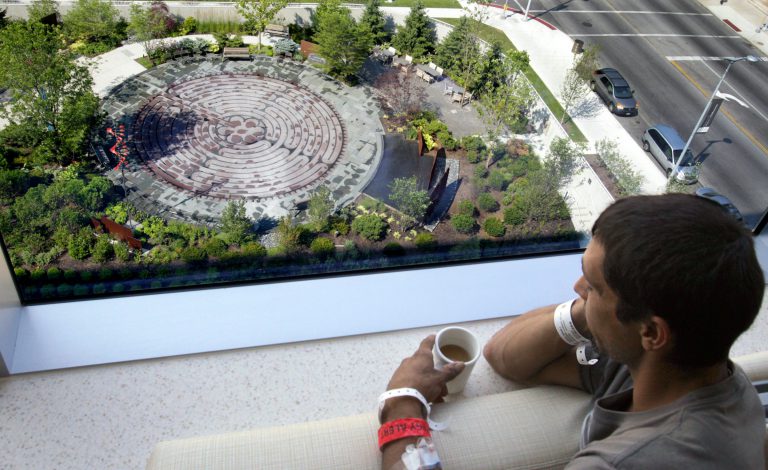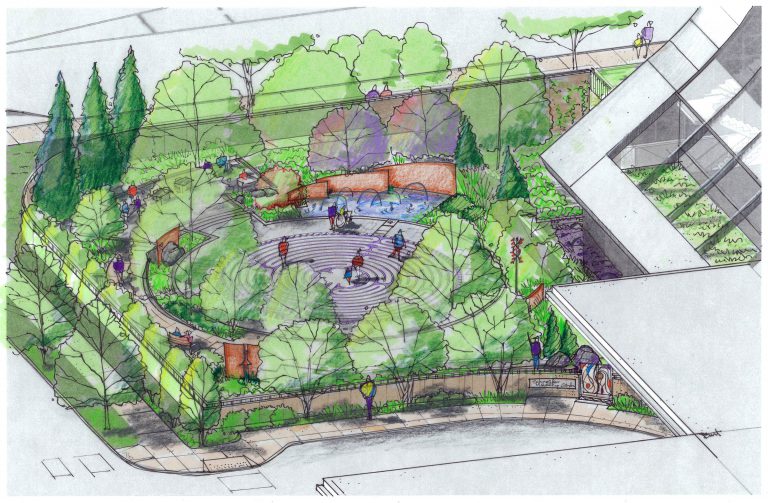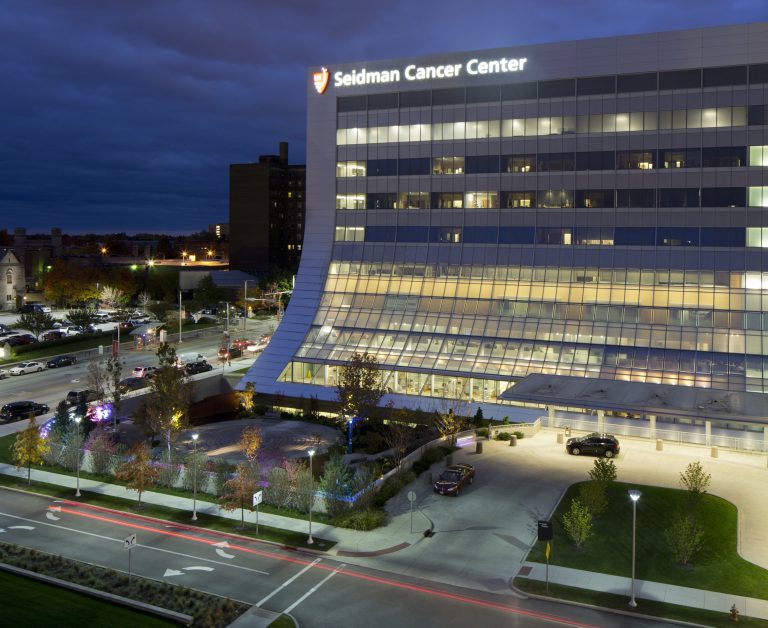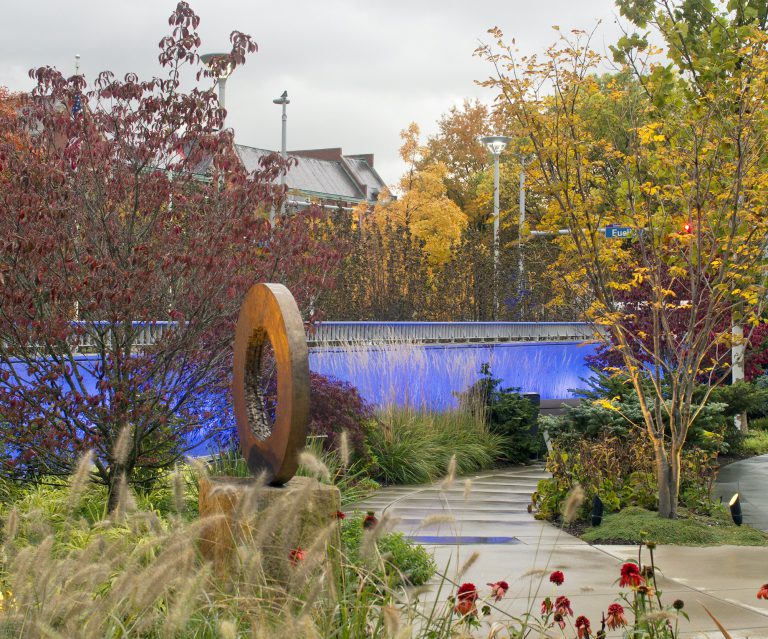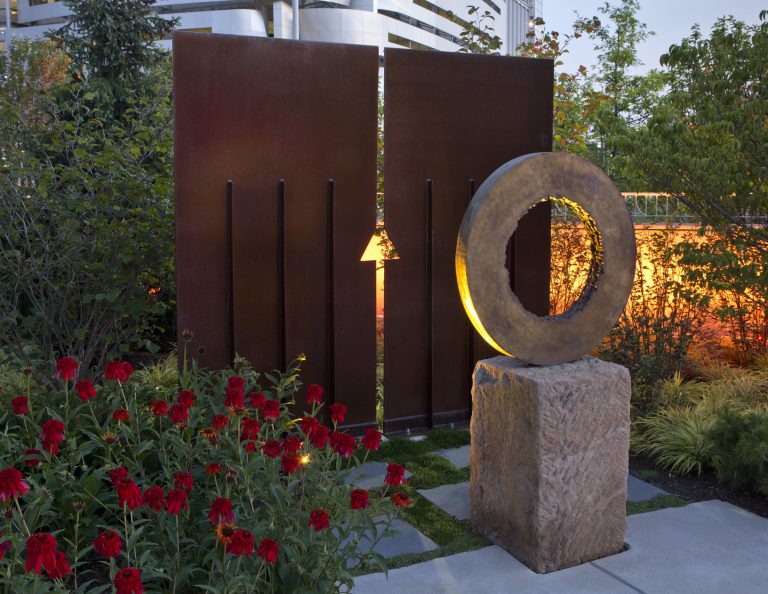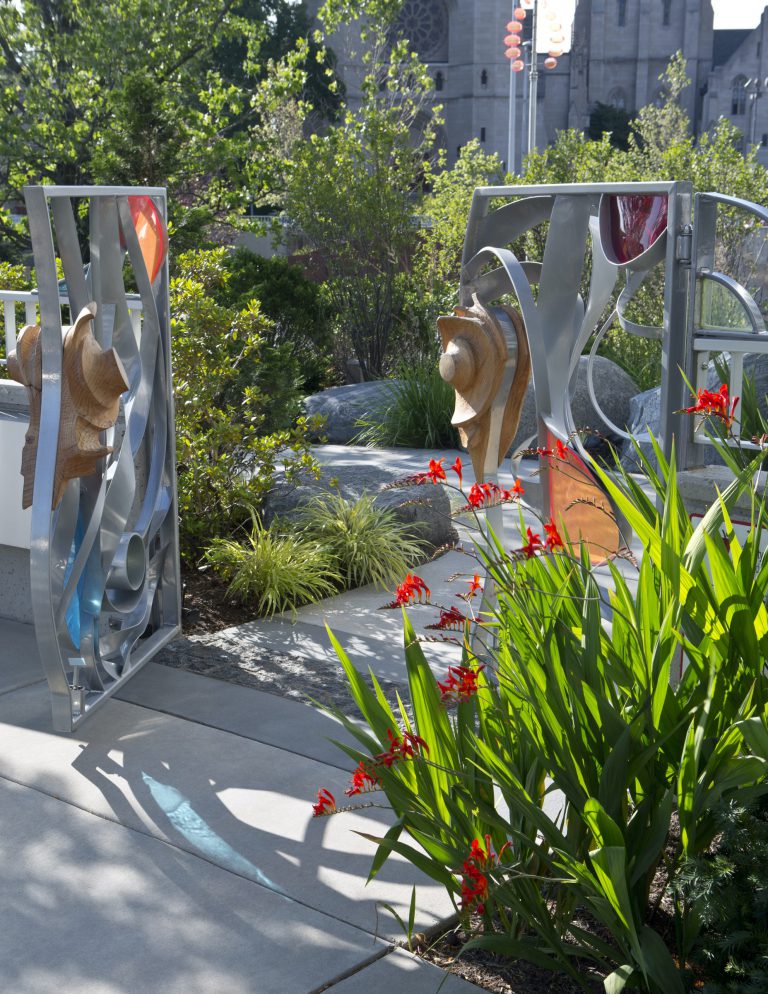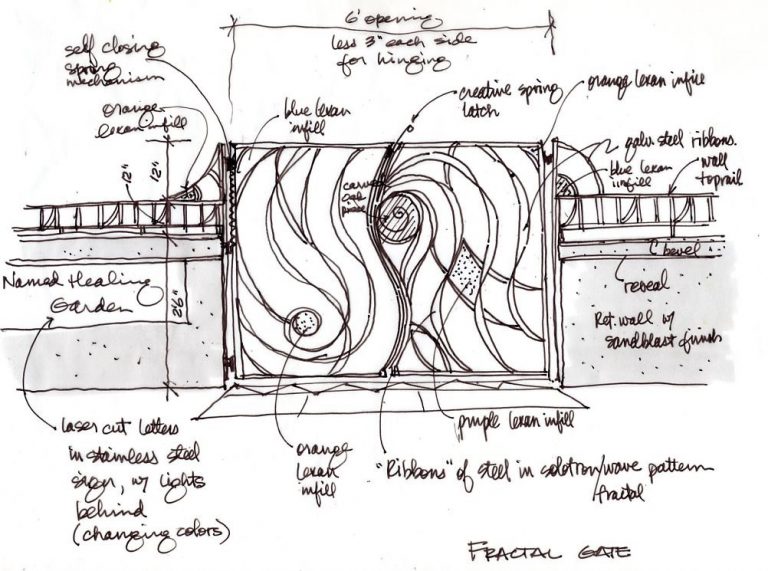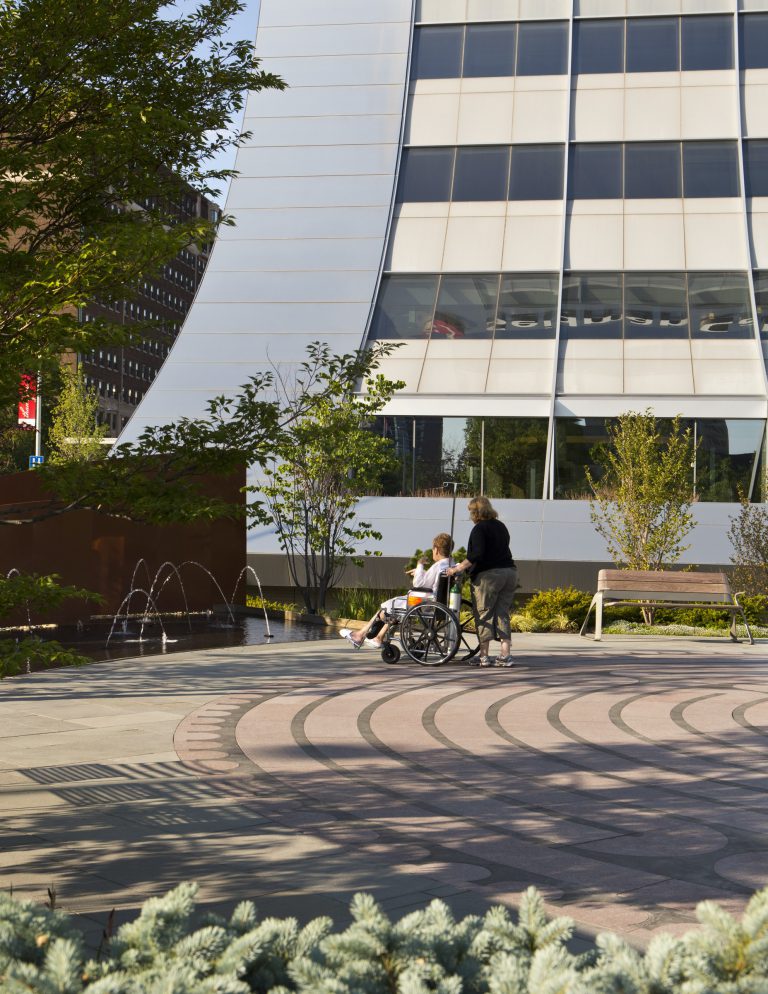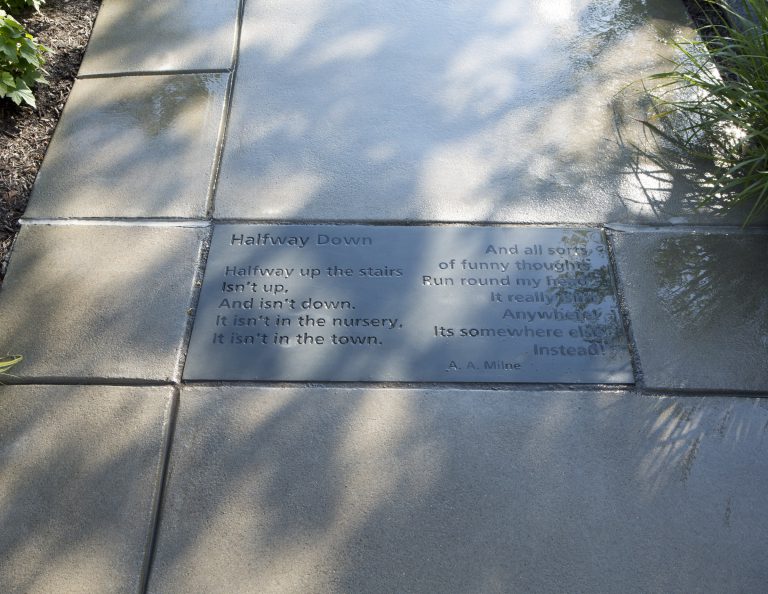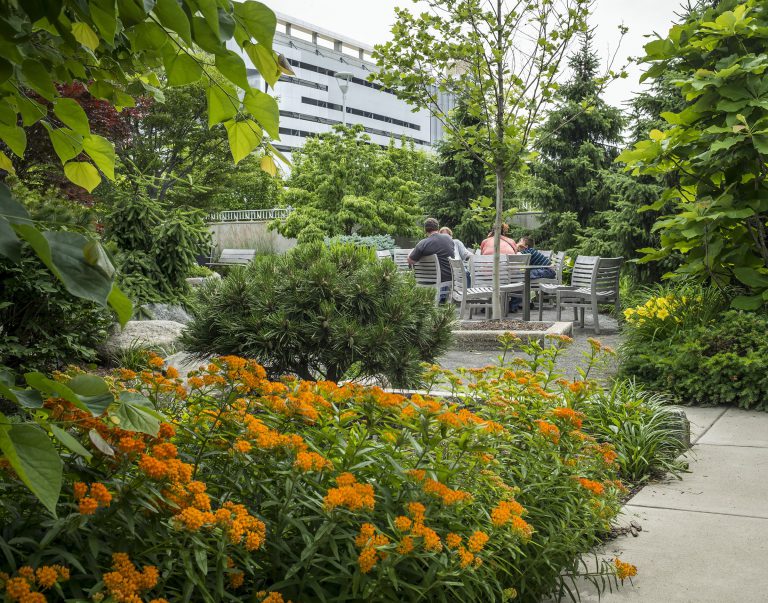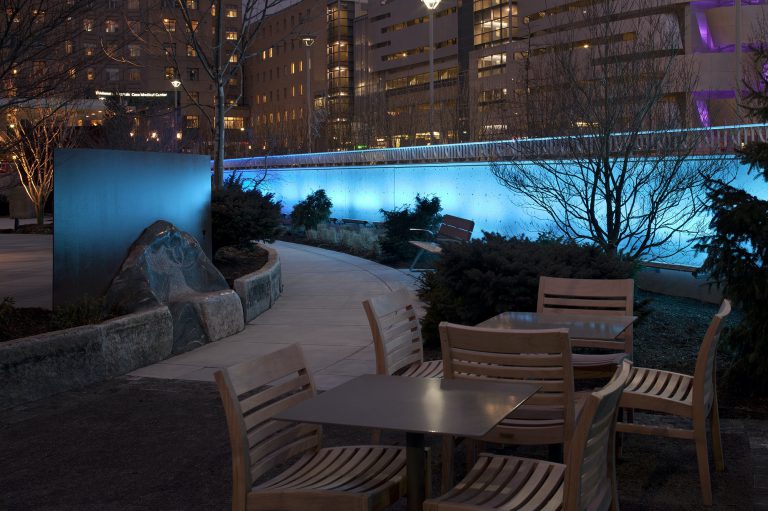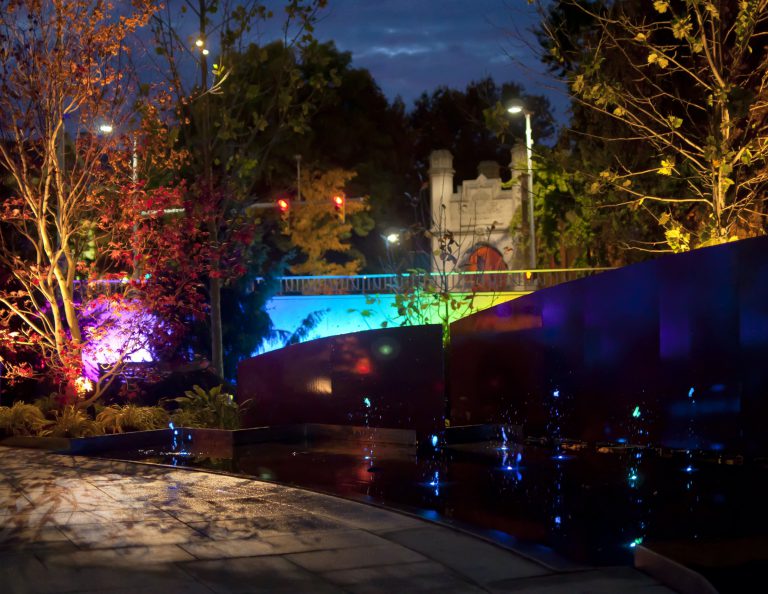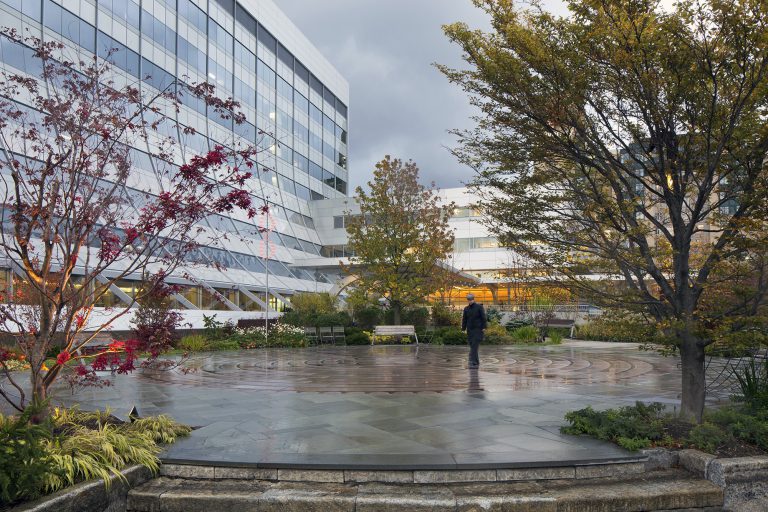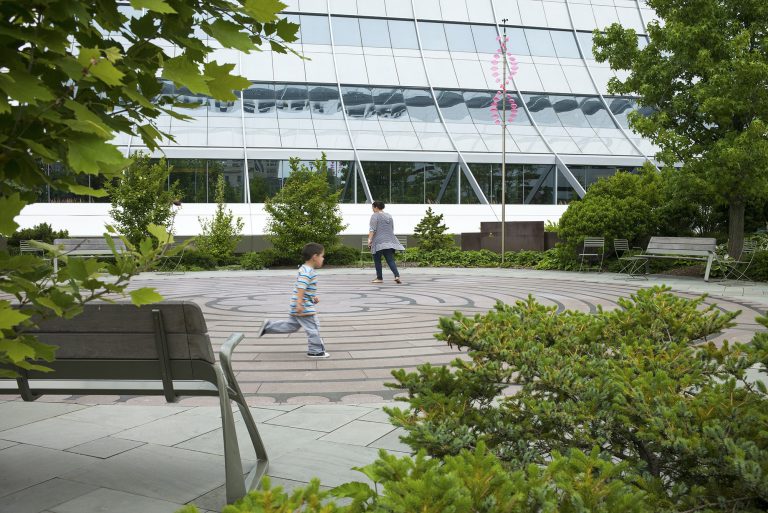
Schneider Healing Garden at University Hospitals
Located in Cleveland’s University Hospitals’ downtown medical campus, the new Seidman Cancer Center (SCC) represents an important consolidation of cancer care — from diagnosis to inpatient and outpatient treatment. The patient focused facility overlooks the Schneider Healing Garden redefining the experience for patients, helping to relieve stress. Integration of the garden into the site & building envelope design created a rare opportunity — placing a healing garden intentionally at the front door of SCC, overlooked by 1000’s of patients and staff from SCC and adjacent buildings. Concurrently, location of SCC on an underutilized street corner allowed a transformation to the campus’ primary entrance and image. The 13,000 SF garden is bounded on two sides by busy Euclid Avenue and newly realigned UH Drive. Detailed patient input showed requests for a place of ‘green’, lots of plants, somewhere to escape even for a moment, where one could touch rock and be inspired with quotes. Combined with the staff/ management desire for tangible positive patient experience, the garden’s design puts patient needs at its heart — an exterior healing environment showing the mission and values of the organization.
Layered plantings are lush and dense — selected for their outstanding features — fall color, texture, unique bark, bloom. Over 80 varieties of native trees, dwarf evergreens, shrubs, and perennials create a stimulating sensory environment. Species were selected to thrive facilitating a sense of well-being in an environment of life and living. Wide & curving accessible paths were finished to maintain albedo effect, reduce glare — an issue that is paramount for patients whose treatments often induce an extreme sensitivity to light — and facilitate ease of use for wheelchairs, IV poles and walkers. Other criteria for gardens of this nature were met and exceeded raising the bar for healthcare design including use of natural materials, mental, emotional, spiritual and physical stimulation, ease of way finding, year-round access, continuous interest and change, and engaging multiple senses all contribute to make this garden a success — creating an environment of ‘somewhere else instead’.
Environmental Sensitivity and Significance
• The garden and Cancer Center building achieved LEED certification (Sustainable Sites, Innovation, etc.);
• The cascading healing garden is even viewed from Radiation-Oncology areas placed below street level (for nuclear safety);
• Drain inlets and sub-drainage were carefully designed and located to allow infiltration in the native sandy soils before overflows are directed into storm sewers;
• Decomposed granite in the lower seating area provides a permeable paving solution;
• Existing granite curbing and paving was reclaimed from the site’s demolition and reused in the retaining walls and steps;
• Micro-spray irrigation, native plants, centralized control/rain sensors contribute to efficient water use;
• Excess steam from the hospital is utilized to heat the water feature for year round animation;
• Green roof technology was incorporated immediately outside the chemotherapy suite;
• Energy-efficient LED lighting fixtures and photo eyes are used throughout the garden; and,
• Recycled concrete materials are incorporated into all concrete walls & base mixes
